My most recent haikyo post created a miniature storm on the internet. A variety of English and Japanese-speaking sites were all commenting on the ‘Royal House‘ ruins that had lain dormant for so long. Speculation on who used to live there and what their relationship was to the Imperial Family of Japan.
The excitement got me fired up again as well… I found myself with a burning desire to get back to the house and look for more answers, my exploration time having been limited on the first visit. I wanted to know more about the mysterious foreigner whose colour photograph sat in a handsome glass frame. I longed to pour over some of the old letters for more names and hints about the family and their connections. So I decided to take another trip back to the lonely, crumbling abode to see what I could find.
A Royal Connection of Another Kind

I didn’t think anything could top the discovery of an original Imperial Japanese Family Portrait in the house from the first time, but somehow I’ve returned even more surprised…
It turns out that the house doesn’t just conceal Japanese Royal connections, but also British Royal connections! A lone photograph that emerged showed the cheerful foreign gentleman present in so many pictures inside the house. He is walking alongside none other than Queen Elizabeth II and her husband, the Duke of Edinburgh.
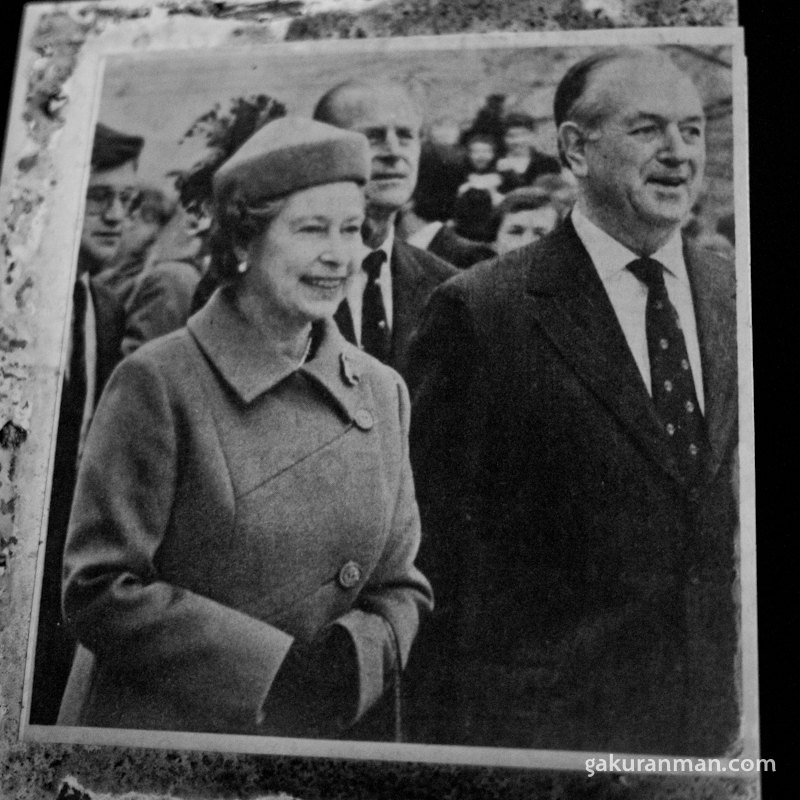
I also came across a letter hidden amongst the pile of old mail and rubbish sitting in the front doorway sent from an organisation. It showed the same gentleman again in the company of the British upper-class, standing next to the then Secretary of State of Education.
Just who is this mystery man?!
There were several more clues in the house. A set of fancy wooden business cards with a tell-tale foreign name written in Katakana (removed) and an English newspaper clipping dated 1973 from the Japan Times, documenting the opening of one ‘Hotel Okura’.

It seems this Tokyo hotel was significant for this family, as there are many pictures showing them enjoying expensive black-tie parties and dinner events as well as an array of complimentary hotel matchsticks strewn around an upstairs room.
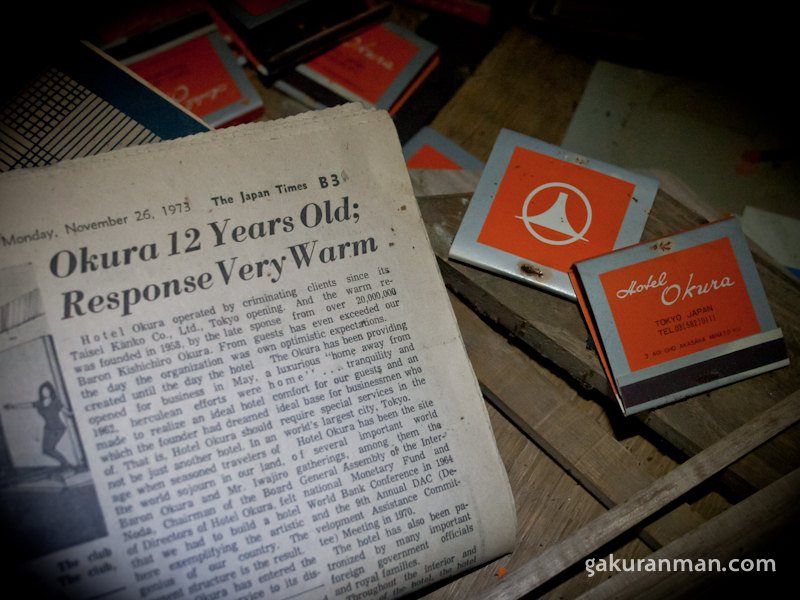
Nearly all the pictures in the house showed Western male friends of the family and, interestingly, persons of Indian descent. In fact, one photo displayed on the funeral altar in the tatami room showed the old Japanese lady of the house with an Indian women standing behind her, a kind smile spread across her face.
Adding to this, one of the old scrolls kept inside the black box displaying the Imperial mark was addressed to the same Western gentleman; a certificate of gratitude for donating a large sum of money to rescue animals in the wake of a volcano eruption.
Other foreign goods such as trinkets like a souvenir spoon from London, British cigarette filter papers, matchstick boxes and cassette tapes with foreign songs on them all help support the idea that our mystery foreigner was indeed very close to the family.
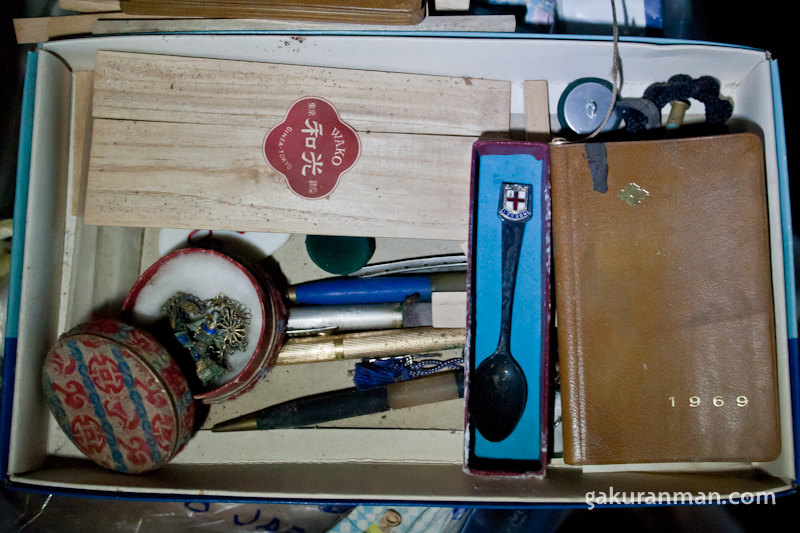
Needless to say, I wasn’t able to piece the story together in the quiet darkness that surrounded me in the house. It was only after returning home and firing up a massive search before I had a major discovery. There are still details that I need to confirm, but the evidence to suggest so is overwhelming. Here’s what I’ve discovered so far.
The Unknown Foreigner
Our mystery gentleman, Mr. J (whose real name I will withhold for now) served with distinction in WWII, finally being awarded the Military Cross for great leadership. Upon returning to the U.K, he resumed his work in the family pearl business in London. Soon after, he moved to Japan, married the daughter of a consulate official and lived out the rest of his life in Tokyo. Notable achievements include his founding a charitable organisation which still exists today. He apparently had no children and sadly passed away in 1991. My guess is the portrait below found in the house is of this man, but I cannot find a single picture on the internet to confirm it.
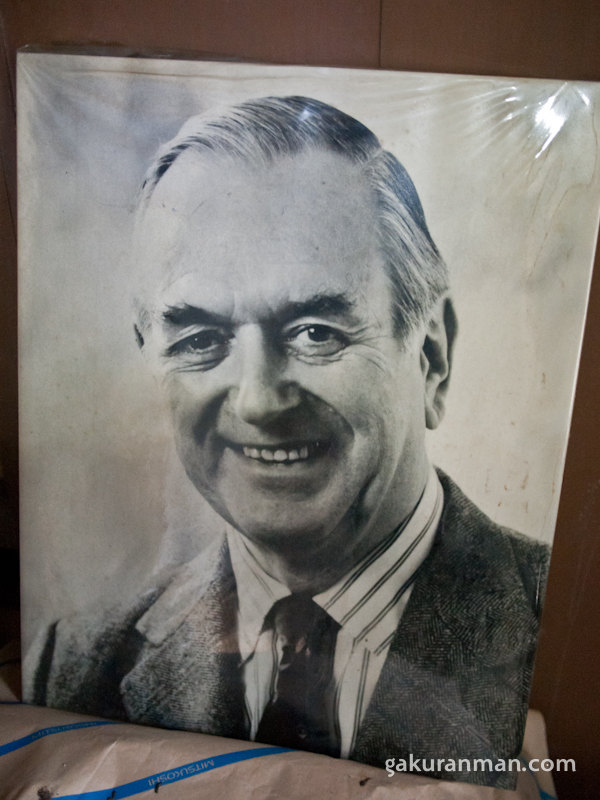
So far I can only find one source to confirm the details of his life, so I still have my doubts, but his wife’s name matches one I found on many letters and postcards in the house. It also explains why this gentleman was seemingly so beloved by the family; he was perhaps a benefactor of sorts. I can imagine a house with a family member working for the embassy to be wealthy to begin with, but factor in that their daughter married a millionaire pearl dealer, and the luxury this house exudes all starts to make sense. An empty pearl box I found in the house also seems to support this. All things considered then, the picture of him with the Queen would be understandable given his status, wealth and propensity for charity.

A Photographic History
I did come across a plethora of old (and quite new) photos showing the house in various states. I’ve included them here for reference. It does seem very much that the family had a lavish lifestyle.

The house under construction. I wonder when it was built..?
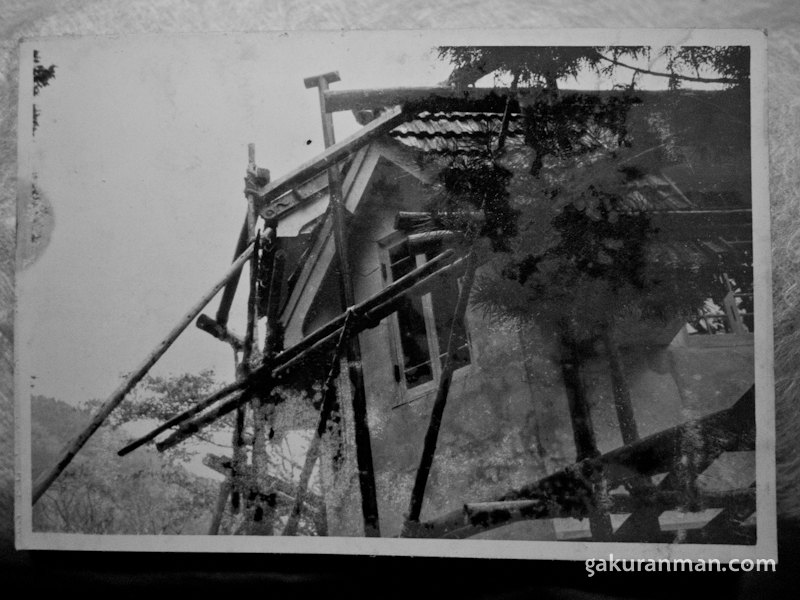
Another angle.
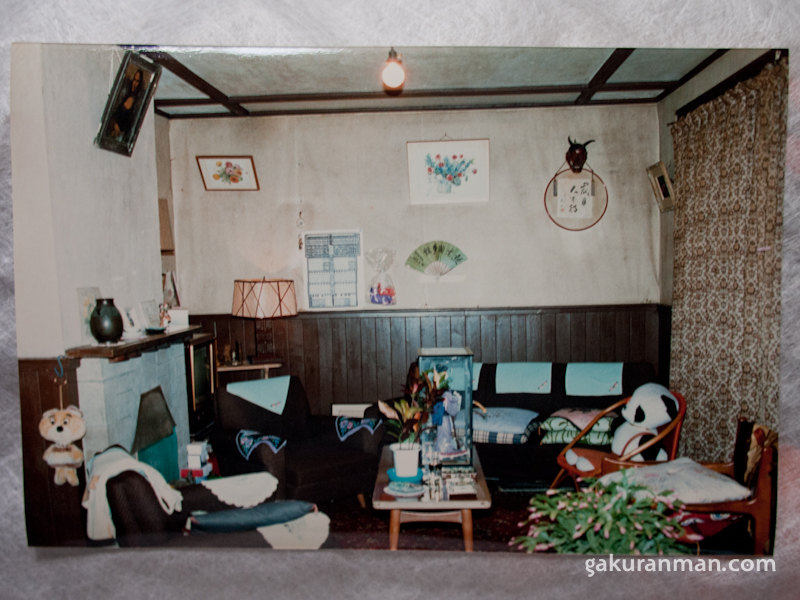
A shot of the downstairs living room. Gorgeous.
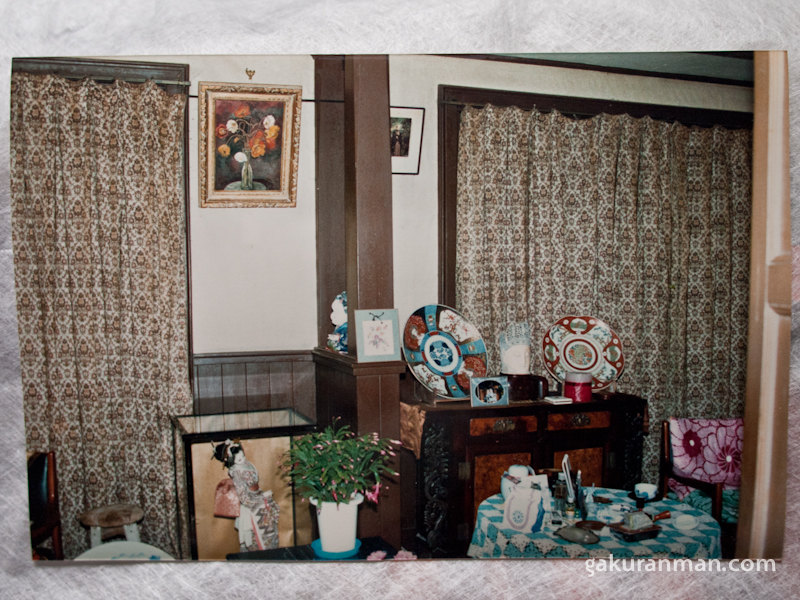
And another. The contrast between these pictures and the state of the first floor now is shocking.
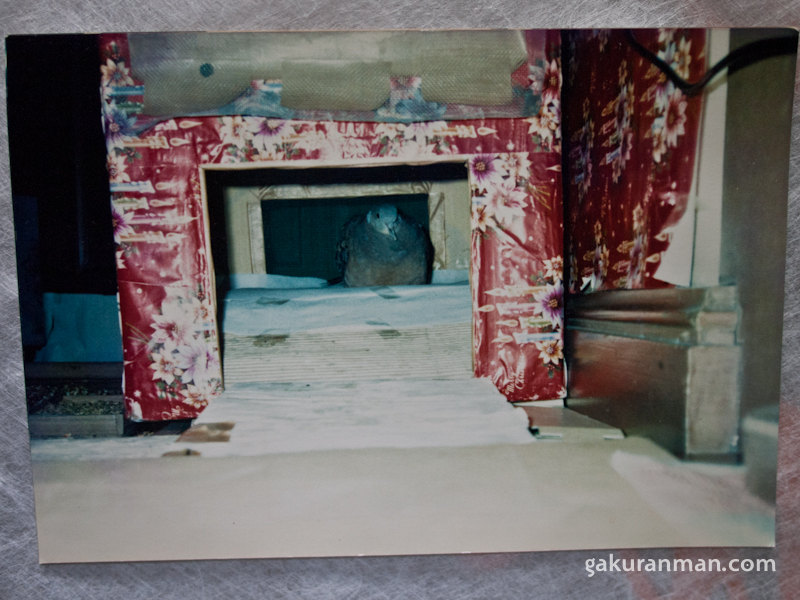
It turns out that the small box adorned with red wrapping paper was indeed for a pet bird. I had been under the impression it was for a cat, but many Japanese commenters on another board were talking about Popo-chan being a bird. It was true that a bird’s picture was sitting on the Buddhist altar in the house, but I wasn’t yet convinced it lived in the box or had died. The old picture above changed my mind about that.
Unsolved Puzzles
What is still unclear to me is who actually lived in this now haikyo house. There is evidence to suggest that Mr. J and his wife Mrs. K may have done – perhaps as a summer retreat (his address on the business card pointed to Tokyo). It is unclear whether or not he changed his surname after marrying, but given the huge weight it carries, I highly doubt that he did. Considering, then, that all the mail stacked up in the house reads the Japanese surname, I suspect that his in-laws may have lived here or that the house was registered in his wife’s name. It is interesting to note however that, of the two upstairs rooms, one is a typical tatami-style room with an alcove (床の間), and one is distinctly Western with an abundance of wooden furniture, but also many Japanese goods.
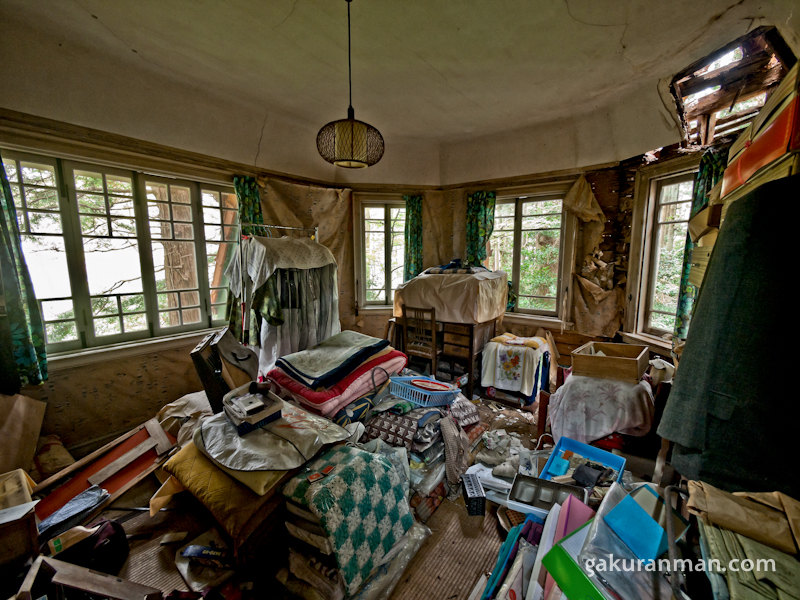
There is also still the unsolved mystery of who the Japanese family was that Mr. J married into. A single tantalising line from the source I found says that he married the daughter of a consulate general. A online search did not turn up anything useful though. Most of this happened pre-internet so I’m not entirely surprised.
Many comments on Japanese message boards suggest that this is just a regular family who loved the Imperial House of Japan. I find myself tending to agree with them; it seems that, as wealthy as this family was and the amazing connections they had, they look to be an ordinary upper-class family. Without launching a serious search through old library records into the family name, it won’t be easy to solve this puzzle.
The famous alcove containing many portraits is below. I’m not entirely sure who all the people are, but perhaps others can help shed some light. Is it possible that the bottom left/top right picture is of the Japanese Emperor?
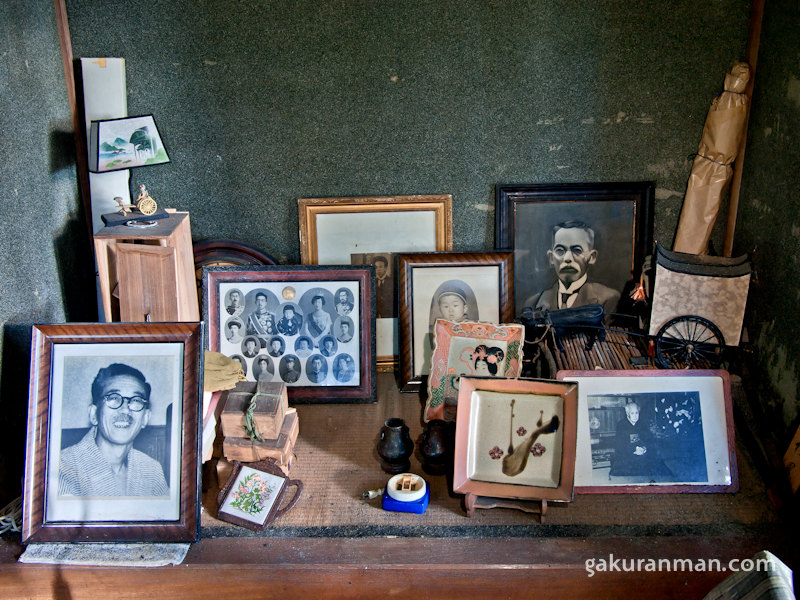
It is also unclear as to whether any family members remain alive today. I did find a Yomiuri Shimbun newspaper dated 1997 inside the house next to a funeral photograph of a Japanese lady suggesting that the last time a relative visited the house was around this time (unread mail dates back around this time too).
However, an old calendar still hanging up on a wall reads 1988. Perhaps the last time the house was lived in was around this date? It certainly corresponds with the death of Mr. J quite closely – one might suppose he became ill and was unable to visit the house in his final years. Perhaps his dear wife Mrs. K passed away in 1997? Could this be a lock of her hair kept safe in a beauty cabinet..? I hear that locks of hair can be taken at birth, as well as at death as keepsakes…
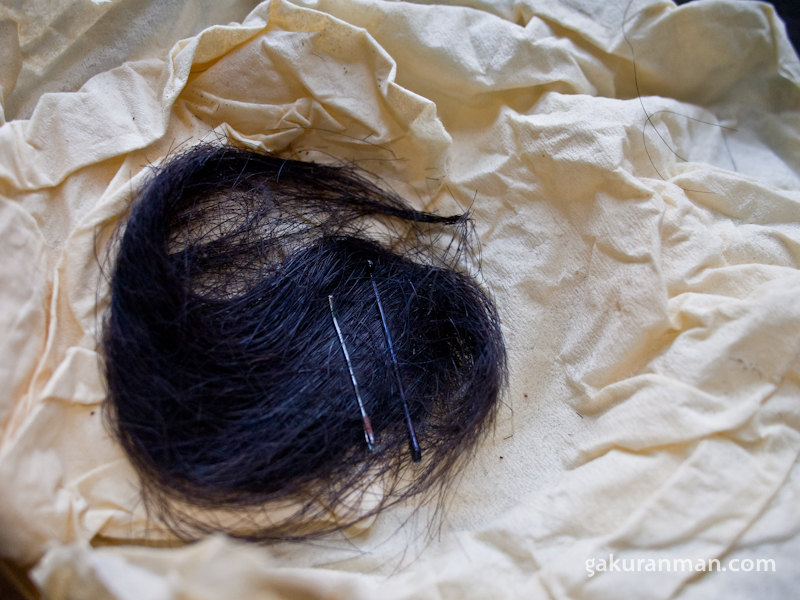
Another document bearing the Imperial mark surfaced this time. Anyone good at old Japanese who wants to have a crack at translating it?
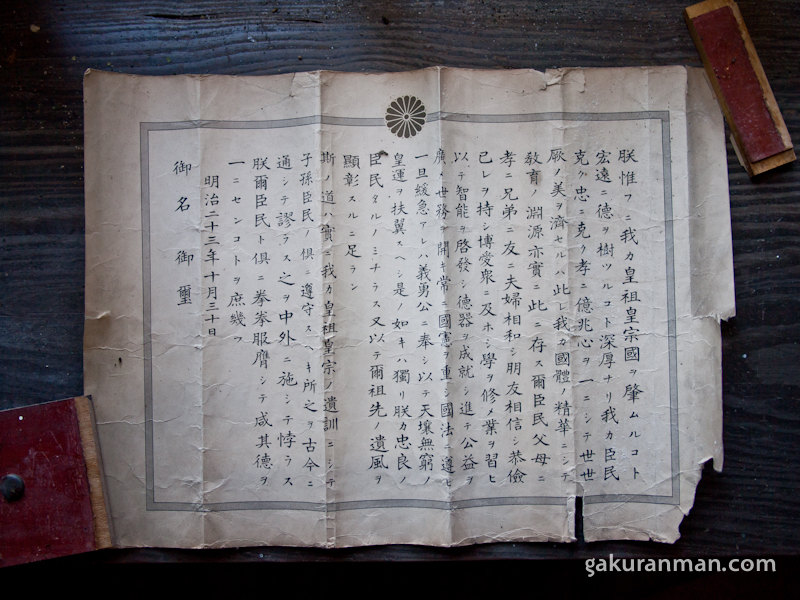
Depending on what I can discover, part three may follow this post in the future. I hope we can solve the mystery!
**Edit** Part 3 is here!
**********
Note: Again I’ve attempted to be selective with the information and pictures I post, tending towards official portraits and otherwise known public figures. I debated about revealing the name of our foreign man, but without confirming more facts and giving it more consideration I’m reluctant to do so. The picture of the Japanese alcove is also controversial in that I decided not to blur the faces out. I personally feel that the majority of pictures here (like the baby or the old lady) will not be helpful in distinguishing individuals that lived in this house due to extremes of age. The only picture I was a little concerned about showing was the photo of the middle-aged man to the bottom left. He may still be living. Is he of the Imperial family or from this family..?
A great many of you also left me very relevant and interesting comments about the possibility of reporting this location to a local historical society. Judging by the new information I’ve begun to dig up, I am beginning to think that this may be a good idea. It seems our foreign man was very well respected and loved by many people. I’m working on confirming as many of the facts as I can, but this won’t be possible immediately. In the meantime, I hope that the collective power of internet historians can be put to good use to solve the remaining mysteries and come to a conclusion on what best to do about this location.
Thanks.









Are absolutely sure you know who the Western man is? It looks suspiciously like Louis Calhern!
just squat in the house for a month and I bet you could claim it as your own. but then youll have to pay taxes.
just look up the address go to city hall and they will give you all the records you need. Don’t know why there is all this secrecy.
Wow, such a warm and intimate look at this place and through this pictures. It would be nice to know about them. Especially about this european connection. They really look like nice warm people with an colourful open mind.
I knew some folks that knew them, but they are all dead now.
We all went to the Tokyo Club and the Okura.
Ron
I’ve made my little research and I really hope the organisation that Mr. J founded or someone worthy pick up the work and restore this house as a national treasure or kind of world’s heritage site…
That would be nice! Be as far as I understand it, this person living in this house was probably not Mr. J but a member of the K family. I wonder if the organisation would have any power to do anything…
yeah, I did forgot to mention that it might have been, indeed, a member of the K family living in this house…
The thing I’m really wondering tough is; that property must certainly belong to somebody, and the city hall of the town in which it is (or nearby, because it seems to be way deep in the woods) must have all the details about who owns it or who used to own it. Unfortunately, they might not give this kind of information to the general public.
I’m not sure on how it works in Japan, but disused houses/properties that doesn’t have a successor might be transferred by the notary to a certain authority (state, governmental) and be sold back via housing/development/property realtors like on this website : foreclosedjapan.com . Maybe it doesn’t work that way or they simply forgot about it due to the many places in Japan being let down, but surprisingly, in this prefecture, there seems to have many haikyos…
Like some other people commented, there are such treasures in this house that should belong to a museum that it’s sad to see this going without any one knowing what will happen to this place.
Like “Sam P” said :
“Historically speaking, I cannot stress just how important this document is, and I recommend you quickly make sure someone with the proper authority is entrusted with this item. It would be a terrible shame if it were vandalized in any way. While obviously there were many versions of the rescript made, I believe these were hand written and because they were from the Imperial Household it would mean this item in particular is of immense value. ”
I hope to see/read about a sequel or good news about this discovery in the near future.
mitch
what a mystery! thanks for posting this
what is the thing wrapped in paper in the alcove photo ? (top right)
there is also 2 small box that seem interresting.
I’m not sure; I didn’t open it to find out…
I suppose you could get in touch with the Foundation to see if they’d have any interest (or connections with surviving relatives with an interest) in what you’ve found.
Definitely something I’m considering :). Can you make head or tail of that old Imperial document, out of interest?
It’s the 1890 Imperial Rescript on Education. Not a personal letter to our pearl dealer from Emperor Meiji sent via time machine or anything. ;-)
Haha. I scanned it for names but didn’t find anything special. Good to get further confirmation on that. Cheers :).
I’ve never seen this location on any Japanese blogs… Just out of curiosity: Did you find it yourself? And did the Japanese speaking blogs know about it before?
Hey man. Yea, this place has been up on a few Japanese blogs for a while, but with a distinct lack of information or willing to crack it. Perhaps I’m still unaware what I’m putting my foot into…
You went back! Crazy Mike ;) I understand very well the burning desire to come back and learn more though, and glad you could collect some more information.
I couldn’t resist. It had to be done sooner rather than later :p
Although I have training in classical Japanese, I will admit that simply training in classical Japanese is kind of useless unless reading in the specific time period you specialize in. The doccument in classical Japanese that sits prominently in your photo is from the Meiji Period. To be more exact, Meiji year 23, October 30th. In Western dating, this would be October 30, 1890. On closer examination, the document is definitely the Imperial Rescript on Education. Or known in Japanese as 教育ニ関スル勅語 (きょういくにかんするちょくご) This document was placed in every school classroom and was treated as if it were as sacred as the portrait of the imperial Emperor, which was kept in every school. To give one an idea of just how important a document this is, during the Meiji (or Taisho period, I cannot remember which) action was taken to prevent people from risking their lives to save this as well as portraits of the emperor when schools caught fire because of how many people died or were hurt in the process of attempting to save these items from destruction. The loss of these items often resulted in the resignation of principles or even in their suicide. Historically speaking, I cannot stress just how important this document is, and I recommend you quickly make sure someone with the proper authority is entrusted with this item. It would be a terrible shame if it were vandalized in any way. While obviously there were many versions of the rescript made, I believe these were hand written and because they were from the Imperial Household it would mean this item in particular is of immense value.
Hey Sam. Thanks for the insight! That’s really helpful :). I’ll definitely bear your comments in mind about what to do about this place. It seems that the Imperial Rescript is in quite bad condition though – it looked very well read compared to other scrolls that were in the house.